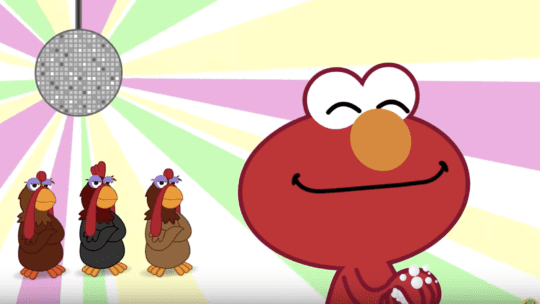
If coronavirus is scary for adults, we can only imagine the confusion and uncertain fear it sparks in the minds of children. And with families sequestered in their homes day and night, it leaves little room for parents to vent their own frustrations or concerns without little ears overhearing.
Children's Brands Lead the Way
Many children's brands have stepped up to the plate to educate children and bring parents some relief. On March 30, actress Kristen Bell hosted a one-hour Q&A special on Nickelodeon, called #KidsTogether: The Nickelodeon Town Hall. Bell’s voice provided a soothing space for many children, who may recognize it from the popular Frozen movies. Celebrities revealed how they are spending their time in quarantine, and health and economics experts discussed everything from how to stay healthy to concerns about a toilet paper shortage.
Another epicenter of historic children’s learning, Sesame Street created a remix for the popular “Brushy Brush” dental PSA starring Elmo; the video, "Washy Wash," currently has over 1 billion views on YouTube. The video also features an Elmo appearance, teaching children the proper way to wash their hands.
"Sesame Street is there for children and families whether it’s a sunny day or a stormy one, and unfortunately many families are facing unprecedented challenges right now," said Dr. Jeanette Betancourt, senior vice president of U.S. social impact, Sesame Workshop, in a statement. "We’re committed to supporting families for the duration of this crisis and beyond—equipping them with the tools they need to get through this together and look to the future with hope and optimism."
Messaging Guidelines for Children
Brands catering to families, and especially children, need to remember to tweak their normal methods of communication, particularly in a time of crisis. There are many guidelines companies can look to to create messaging for a younger audience.
The CDC has dedicated a section of its website to talking with children about coronavirus disease. The site provides general guidelines for talking to children, but it also provides facts about COVID-19 for parents fielding curious questions. Brands can learn from the communication tips, which include:
- Avoid language that might blame others and lead to stigma. Remember that viruses can make anyone sick, regardless of a person’s race or ethnicity. Avoid making assumptions about who might have COVID-19.
- Provide information that is honest and accurate. Talk to children about how some stories on COVID-19 on the Internet and social media may be based on rumors and inaccurate information.
- Make yourself available to listen and to talk. Be sure children know they can come to you when they have questions.
Poynter recalled a list of talking points for children from The Child Mind Institute, an independent nonprofit for children and families struggling with mental health and learning disorders. These also included ideas that may be helpful for brands.
- Be developmentally appropriate. Don’t volunteer too much information, as this may be overwhelming. Instead, try to answer your child’s questions. Do your best to answer honestly and clearly.
- Be reassuring. Children are very egocentric, so hearing about the coronavirus on the news may be enough to make them seriously worry that they’ll catch it. It’s helpful to reassure your child about how rare the coronavirus actually is (the flu is much more common) and that kids actually seem to have milder symptoms.
- Focus on what you’re doing to stay safe. An important way to reassure kids is to emphasize the safety precautions that you are taking. Jamie Howard, a child psychologist at the Child Mind Institute, said “kids feel empowered when they know what to do to keep themselves safe.”
PBS also published an article on how to talk to children, when so much information is swirling between them, the television, internet and their own friend groups. Think about your youth audience and what they may be most fearful of. Addressing those questions and providing real and honest answers that include proven facts will be well-received. Explain things to them in scenarios to which they can relate.
Deborah Farmer Kris, an education writer for MindShift, an NPR learning blog, and parenting project partner with PBS Kids for Parents, described a scenario in which she had to explain social distancing:
"I explained it like this: 'Germs like to travel from person to person. Have you ever noticed how kids in your class sometimes get sick at the same time? If lots of people stay home for a while, it will be hard for the coronavirus germs to travel to new people — and that’s good news for doctors and nurses who are helping people who get sick." A few hours later, I heard my 8-year-old re-explain it this way to her kindergarten brother: 'This sickness isn’t a big deal for you or for me, but we need to be germ-busters so we can protect other people — like grandma and grandpa! This is how we help.'"
